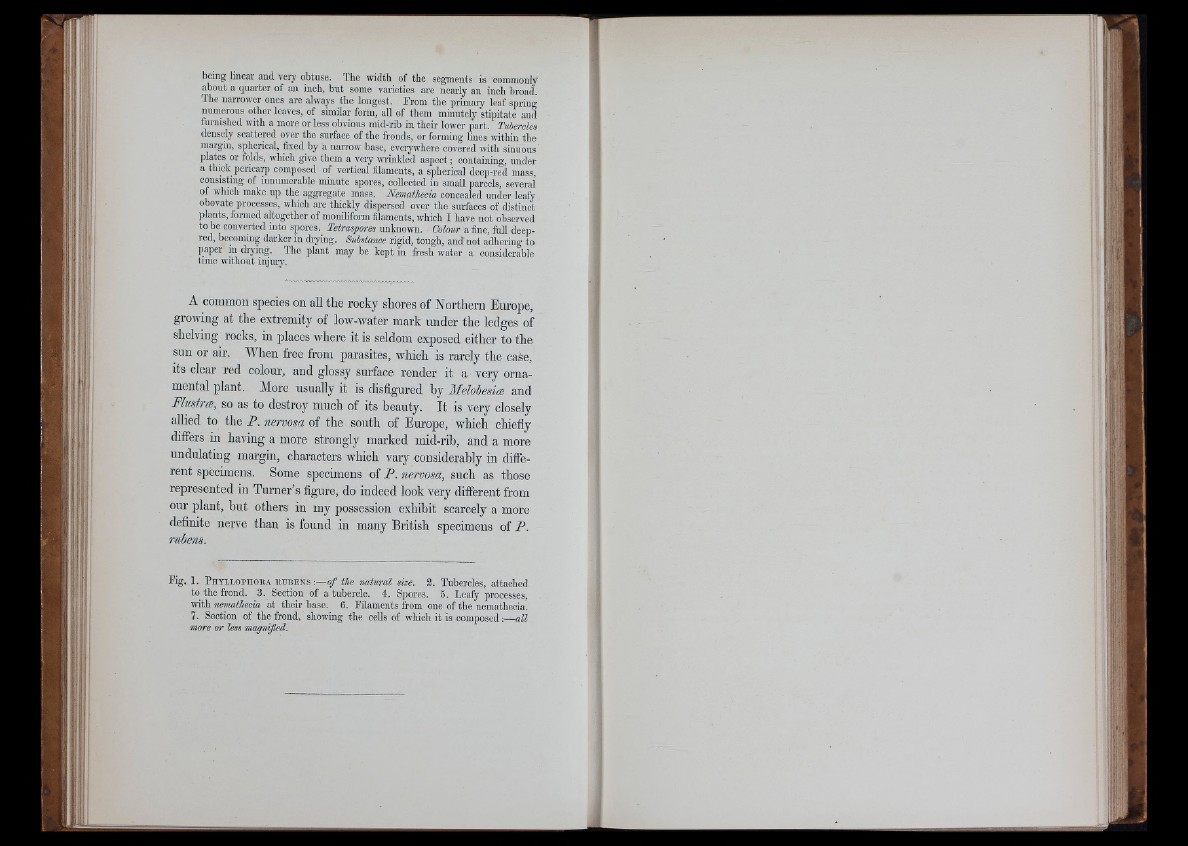
being linear and very obtuse. The ividth of the segments is commonly
about a quarter of an inch, but some varieties are nearly an inch broad.
The narrower ones are always the longest. From the primary leaf spring
numerous other leaves, of similar form, all of them minutely stipitate and
furnished with a more or less obvious mid-rib in their lower part. Tuhercles
densely scattered over the surface of the fronds, or forming lines within the
margin, spherical, fixed by a narrow base, everywhere covered with sinuous
plates or folds, which give them a very wrinkled aspect ; containing, under
a thick pericarp composed of vertical filaments, a spherical deep-red mass,
consisting of innumerable minute spores, coUected in small parcels, several
of which make up the aggi-egate mass. Nem-athecia concealed under leafy
obovate processes, which are thickly dispersed over the surfaces of distinct
plants, formed altogether of monüiform filaments, which I have not observed
to he converted into spores. Tetraspores unknown. Colour a fine, full deep-
red, becoming darker in di-ying. Substance rigid, tough, and not adhering to
paper in drying. The plant may be kept in fresh water a considerable
time without injiuy.
A common species on ail the rocky shores of Northern Europe,
growing at the extremity of low-water mark under the ledges of
shelving rocks, in places where it is seldom exposed either to the
sun or air. When free from parasites, which is rarely the case,
its clear red colour, and glossy surface render it a very ornamental
plant. More usually it is disfigured by Melobesiæ and
Fhstræ, so as to destroy much of its beauty. It is very closely
allied to the P. nervosa of the south of Europe, which chiefly
differs in having a more strongly marked mid-rib, and a more
undulating margin, characters which vary considerably in different
specimens. Some specimens of P. nervosa, such as those
represented in Turner’s figure, do indeed look very different from
our plant, but others in my possession exhibit scarcely a more
definite nerve than is found in many British specimens of P.
Fig. 1 . P h y l l o p h o k a r u b e n s -.— of the natural size. 3. Tubercles, attached
to the frond. 3. Section of a tubercle. 4. Spores. 5. Leafy processes,
with nemathecia at their base. 6. Filaments from one of the nemathecia.
7. Section of the frond, showing the cells of which it is composed :—all
more or It '" ’